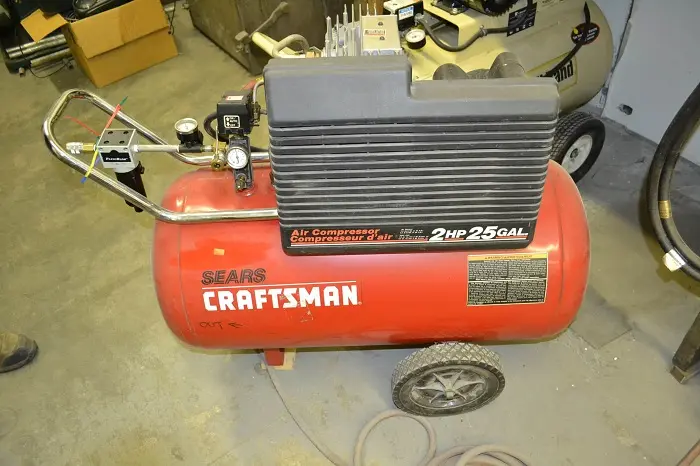Air compressor tanks are vital components of compressed air systems, storing pressurized air for various applications. The materials used in their construction significantly influence performance, durability, and safety. This article will delve into the different materials used to manufacture air compressor tanks, their properties, advantages, and considerations for choosing the right one.
Air compressors are essential tools in many industries, from automotive to construction. They provide compressed air for powering pneumatic tools, inflating tires, and even as part of HVAC systems. The tank of an air compressor stores the compressed air generated by the pump, allowing for a consistent supply when needed. Understanding what these tanks are made of can help users make informed decisions about their equipment and maintenance.
Common Materials Used for Air Compressor Tanks
1. Steel
Types of Steel
Carbon Steel: The most common material for air compressor tanks, carbon steel is known for its strength and durability. It can withstand high pressures, making it ideal for air storage.
Stainless Steel: While more expensive, stainless steel offers excellent corrosion resistance. It is often used in environments where moisture is a concern, such as in food processing or marine applications.
Advantages of Steel Tanks
Strength and Durability: Steel tanks can handle high pressures without deforming, ensuring safety and longevity.
Cost-Effectiveness: Carbon steel tanks are generally less expensive than alternative materials, making them a popular choice for many applications.
Weldability: Steel can be easily welded, allowing for repairs and modifications.
Considerations
Corrosion: Steel tanks are susceptible to rust if not properly coated or maintained. Regular inspections and protective coatings can mitigate this risk.
2. Aluminum
Properties of Aluminum Tanks
Aluminum tanks are lightweight and resistant to corrosion, making them suitable for specific applications.
Advantages of Aluminum Tanks
Lightweight: Aluminum is significantly lighter than steel, making it easier to transport and handle.
Corrosion Resistance: Aluminum naturally forms a protective oxide layer, reducing the risk of corrosion in humid or wet environments.
Good Pressure Resistance: While not as strong as steel, aluminum can still withstand considerable pressure when designed correctly.
Considerations
Cost: Aluminum tanks can be more expensive than steel options, which may not be cost-effective for all users.
Mechanical Strength: Aluminum is generally less durable than steel, making it more susceptible to dents and damage.
3. Composite Materials
What are Composite Tanks?
Composite tanks are made from a combination of materials, often using a polymer matrix reinforced with fibers such as carbon or glass.
Advantages of Composite Tanks
Lightweight: Composite tanks are lighter than both steel and aluminum, making them ideal for portable applications.
Corrosion Resistance: These tanks are highly resistant to corrosion and chemical damage, increasing their lifespan in harsh environments.
Design Flexibility: Composite materials can be molded into various shapes and sizes, allowing for innovative tank designs.
Considerations
Cost: Composite tanks can be significantly more expensive due to the manufacturing processes involved.
Pressure Rating: Depending on the design and materials used, composite tanks may have lower pressure ratings than steel or aluminum tanks.
Safety Considerations
When selecting an air compressor tank, safety is paramount. Understanding the properties of different materials can help mitigate risks associated with pressurized air storage.
Pressure Ratings
Understanding PSI Ratings: Every tank has a specific pressure rating, measured in pounds per square inch (PSI). Ensure that the tank’s material can handle the maximum pressure your compressor will generate.
Regular Inspections: Tanks should be regularly inspected for signs of wear, corrosion, or damage, regardless of material.
Compliance with Standards
ASME Certification: Tanks should be manufactured according to the American Society of Mechanical Engineers (ASME) standards to ensure safety and reliability.
Local Regulations: Be aware of local regulations regarding air compressor tanks, which may dictate specific materials or safety features.
Maintenance Tips for Air Compressor Tanks
Regardless of the material, regular maintenance is essential to ensure the longevity and safety of air compressor tanks.
1. Regular Inspections
Inspect the tank for signs of rust, corrosion, or leaks. Check connections and fittings to ensure they are secure.
2. Drain the Tank
Moisture can accumulate in the tank, leading to rust and corrosion. Regularly drain any condensation to prevent damage.
3. Protective Coatings
For steel tanks, applying a protective coating can help prevent rust. Stainless steel and aluminum may not require this, but it’s still good practice to keep them clean.
4. Follow Manufacturer Guidelines
Always refer to the manufacturer’s recommendations for maintenance and care specific to your tank material.
Conclusion
Understanding what air compressor tanks are made of is crucial for selecting the right equipment for your needs. Steel, aluminum, and composite materials each have unique properties, advantages, and considerations. By choosing the appropriate material, you can ensure optimal performance, safety, and longevity for your air compressor system.
Related topics:


